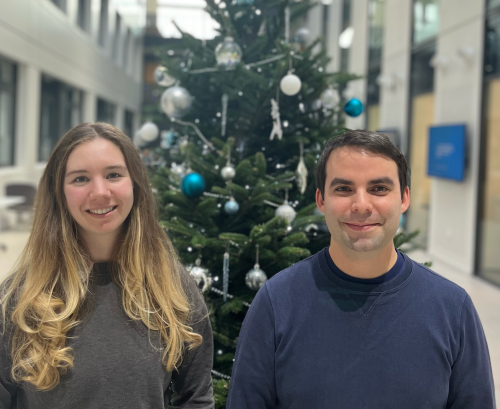
When cells encounter a virus, they respond by upregulating the expression of hundreds of interferon-stimulated genes (ISGs). ISG15 is a ubiquitin-like protein that is highly upregulated in response to viral infection and has critical roles in the innate immune response. Like other ubiquitin-like proteins, ISG15 becomes conjugated to substrate proteins through a cascading series of enzymatic reactions. Despite a growing body of evidence highlighting this signal's importance in viral defence, how ISG15 is coordinated to its substrates and how these modifications impact substrate function remains largely unknown.
Here, Iona Wallace and colleagues report a cryo-EM structure of ISG15 in complex with its E1 (UBE1L/UBA7) and E2 (UBE2L6/UBCH8) enzymes, allowing the visualisation of the first steps of ISG15 conjugation to substrates and the characterization of the specificity determinants of this important pathway. Dr Kirby Swatek initiated this project while he was a postdoc in Professor Brenda Schulman's lab at the Max Planck Institute of Biochemistry, and he continued to develop the project in his new lab at the MRC-PPU. This paper represents a series of firsts. It is the first lead authorship paper for Iona (an MRC PPU-funded PhD student), Kirby's first senior author paper, and the first publication from the Swatek lab. Together, this study sets the stage for future studies focusing on the downstream components of the ISG15 pathway, including understanding the immunomodulatory functions of substrate ISGylation and how viruses manipulate this pathway.
This work was supported by grants from the Max Planck Gesellschaft, European Research Council, German Research Foundation, Medical Research Council, Royal Society, and Lister Institute of Preventive Medicine.

